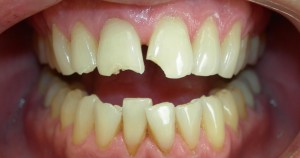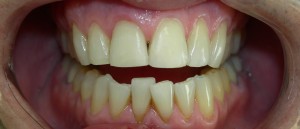By Arthur Kezian
Do you have a specific tooth that bothers you? Are you thinking about veneers or crowns? Sometimes, depending on your case, taking the more conservative option can benefit you. What is the more conservative option compared to getting a veneer or a crown? The answer to that is a dental bonding.
A dental bonding is a moderately easy and inexpensive way to make a significant change to your smile by visiting a dentist.
What is a Dental Bonding?


A dental bonding is a procedure used in cosmetic dentistry where composite materials are applied to the tooth to help change its shape, appearance, color, texture, or size. Dental bondings can be used to repair chipped teeth, stained teeth, or teeth that have broke from the edge. A dental bonding is just like a filling used to restore a cavity. With the many shades available today, a cosmetic dentist can match the bonding to your adjacent teeth and make the tooth look very natural.
Advantages of Dental Bondings
One of the advantages of bondings is that it is less expensive than most other procedures used to repair teeth.
Not only is the cost an advantage, but so is the time. A dental bonding procedure is a one-visit appointment to your dentist and can be completed in 30 to 60 minutes, depending on your case and the simplicity of your tooth.
Dental bondings are usually very easy to do. Unless the bonding material is used to fill a cavity, some patients don’t even need anesthesia for the procedure, your dentist may recommend only using topical – a temporary numbing gel. The process is fairly easy because it requires very minimal removal of the enamel.
Disadvantages of Dental Bondings
Like most things that have advantages, dental bondings also have a few disadvantages. One of the cons of bondings is that they can stain over time. Unlike crowns or veneers (usually made of porcelain), bondings tend to stain because they are made of composite resin. Coffee, tea, red wine, and smoking can all cause staining to the bonding. Because bonding material is porous, you’ll need to be careful about keeping it stain-free. If it stains though, do not panic; bonding materials can be changed and replaced every now and then.
Another disadvantage to bondings is that they are not as durable as crowns. This means you have to be careful about how you chew and what you bite into, especially if the bonding is on your front teeth. You should not bite into hard foods and should make it a habit to cut your foods rather than bite into them (apples, carrots, ribs, etc.). Bondings can last from 3-7 years. As long as you are cautious of your bondings and take care of them, you should be happy with the results at your dentist!
Dr. Arthur A. Kezian DDS 443 N. Larchmont Blvd Los Angeles, CA 90004 (323) 467-2777
